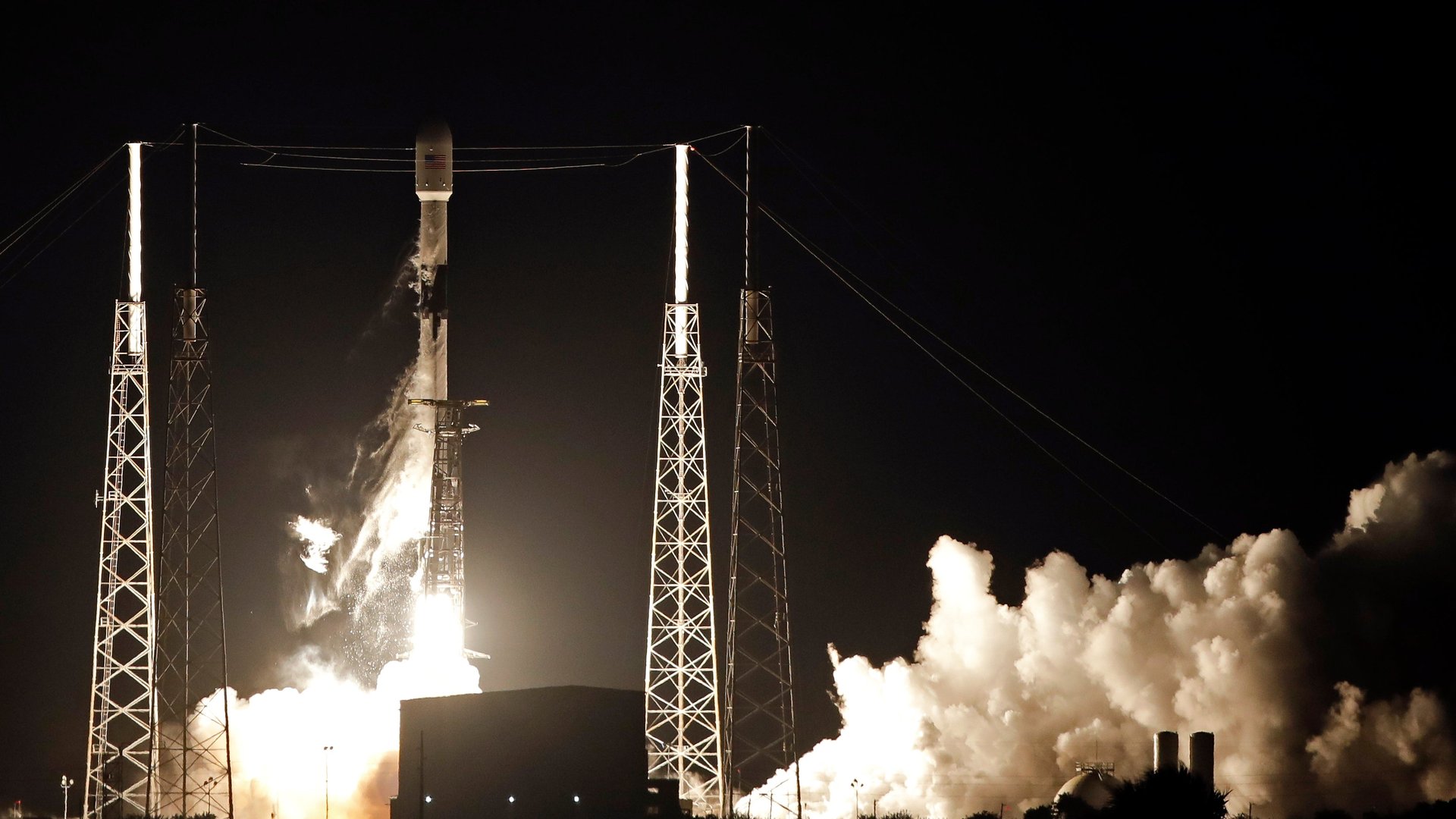SpaceX’s new satellites will dodge collisions autonomously (and they’d better)
“Within a year and a half, maybe two years, if things go well, SpaceX will probably have more satellites in orbit than all other satellites combined,” Elon Musk said last week.


“Within a year and a half, maybe two years, if things go well, SpaceX will probably have more satellites in orbit than all other satellites combined,” Elon Musk said last week.
This is an exaggeration. There are almost 2,000 operational satellites in space right now. But Thursday night’s launch of 60 satellites for a new internet network called Starlink is the first step towards that goal. Today, Musk’s space company said it expects to launch six more times in 2019, with the goal of operating 720 satellites by the end of the 2020, and eventually more than 4,000.
The Federal Communications Commission—the lead regulator for American satellites—approved these satellite, among 13,000 new satellites okayed in the last year. That huge number has many in the space community nervous about the potential for collisions with other satellites or with space debris.
Neither the United States nor the world has a reliable system for managing traffic in space, and policymakers are struggling to keep up with the private sector’s growing ability to hurl computers into the cosmos at faster and faster rates.
Musk said the satellites his company launches will avoid potential collisions on their own. And Mark Juncosa, the SpaceX executive in charge of developing the Starlink satellites, downplayed concerns when answering press inquiries on the matter last week. “It might be worth mentioning for people that are not in the space industry … space is really big,” he said.
It was experts focused on pinning down what’s going on in orbit who questioned whether the autonomous systems would have sufficient data to safely maneuver. Musk’s electric cars at Tesla often face similar questions. However advanced their AI, what’s more important is how well the car can see.
The ultimate source for space situational awareness is the US Air Force’s Combined Space Operations Center, or CSpOC, which tracks orbital objects 10 centimeters in diameter or larger with a worldwide radar network.
Most satellite companies, especially those with large fleets, automate the communications and “station keeping” maneuvers. But when they receive a warning from CSpOC that there is a risk of collision with another spacecraft or with space debris, their team consults with the Air Force to make a decision about how to move.
Planet, which operates more than 150 spacecraft, automates its communications with CSpOC and has software that calculates the probability of potential conjunctions when they receive a warning. But, when the probability of conjunction reaches about 1 in 10,000, their flight operations team steps in to plan a maneuver to keep their satellites out of trouble.
SpaceX says there will be no human in the loop when it comes to its satellites. When notified of a potential conjunction with another object in space, their software will decide whether and how to maneuver, and communicate that information back to CSpOC. It’s not clear what their threshold will be for taking action, or how much warning they will give to the US Air Force. CSpOC did not respond to questions about this communications system.
Satellite experts are happy to see efforts at automation, because conjunction reports are only going to increase as more satellites fly. But they worry about an automated system responding to imperfect data, and emphasize the need for the widest possible transparency.
Though orbital mechanics are extremely predictable, space sensing is imperfect and the margin of error around where exactly a satellite can be is quite large. Many spacecraft operators join the Space Data Association, a trade association for exchanging space traffic data, and others partner with new space surveillance companies like LeoLabs to obtain more data about what’s happening in orbit.
“Because we look at many hundreds of satellites every single day, we find that there are issues with the data,” Dr. T.S. Kelso, a former Air Force officer who works for the Space Data Association, told Quartz. His operation generates about 2,000 conjunction reports every four days. “We can go from something that looks very serious one day to all of the sudden there is nothing in the data. … if you are maneuvering because it is a 1 in 10,000 chance, if you had done nothing, you still had a pretty good chance nothing was going to happen.”
SpaceX isn’t responsible for the lack of a real space traffic management system, but as a first mover among companies preparing ambitious satellite networks that far outstrip anything that came before, it is likely to set the tone for how operators and regulators interact. The company chose to fly the satellites at a low enough altitude that if they fail, they will safely burn up in the atmosphere within a year, rather than remaining space junk.
“The space junk thing, we don’t want to trivialize it or not take it seriously,” Musk said. “[But] it’s not crowded up there. It’s extremely sparse. If your goal was to hit something, it wouldn’t be easy.”